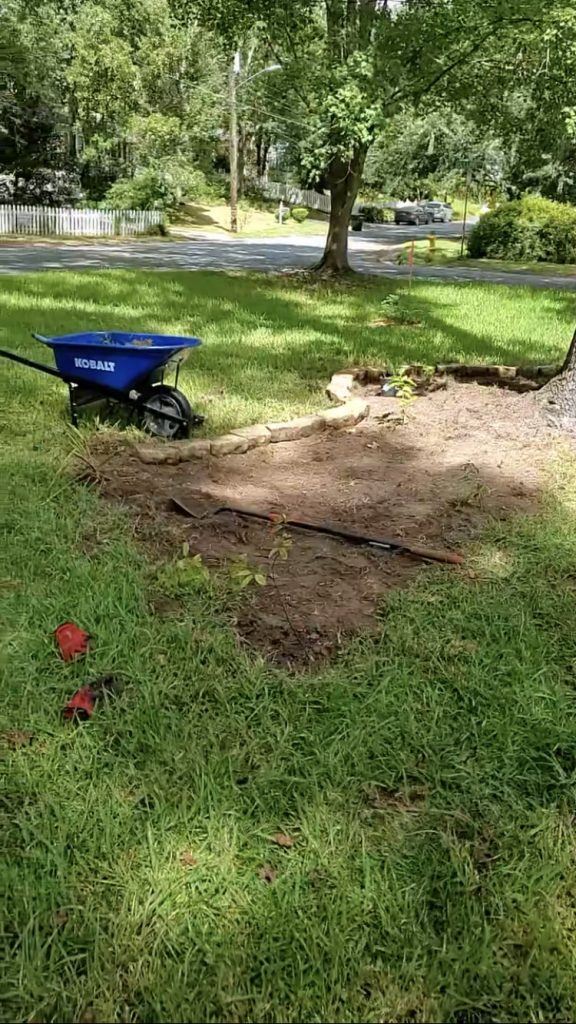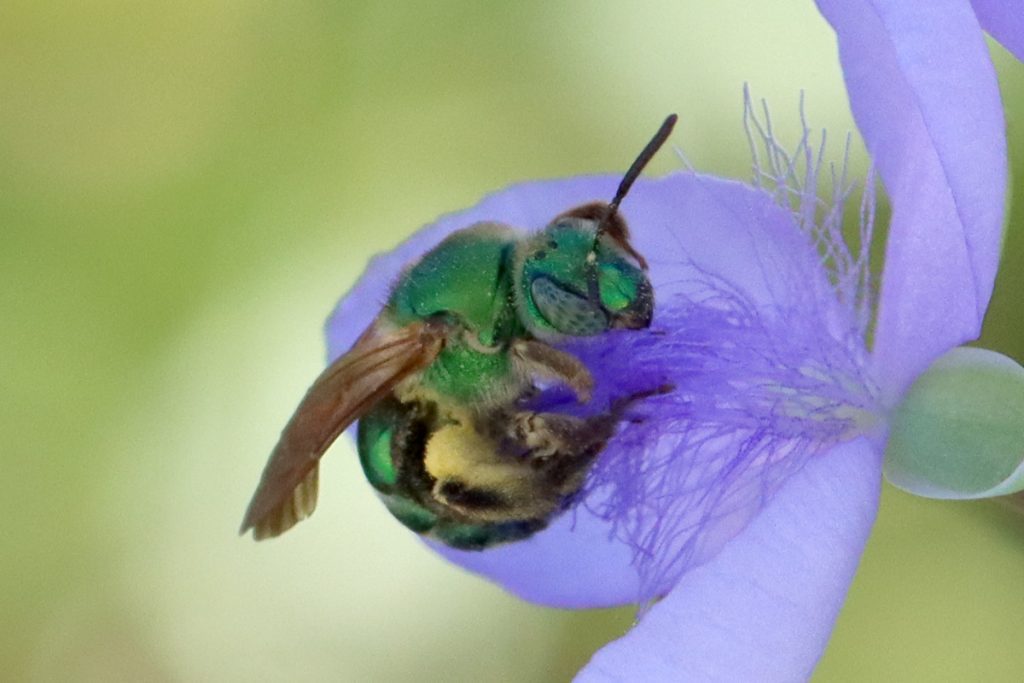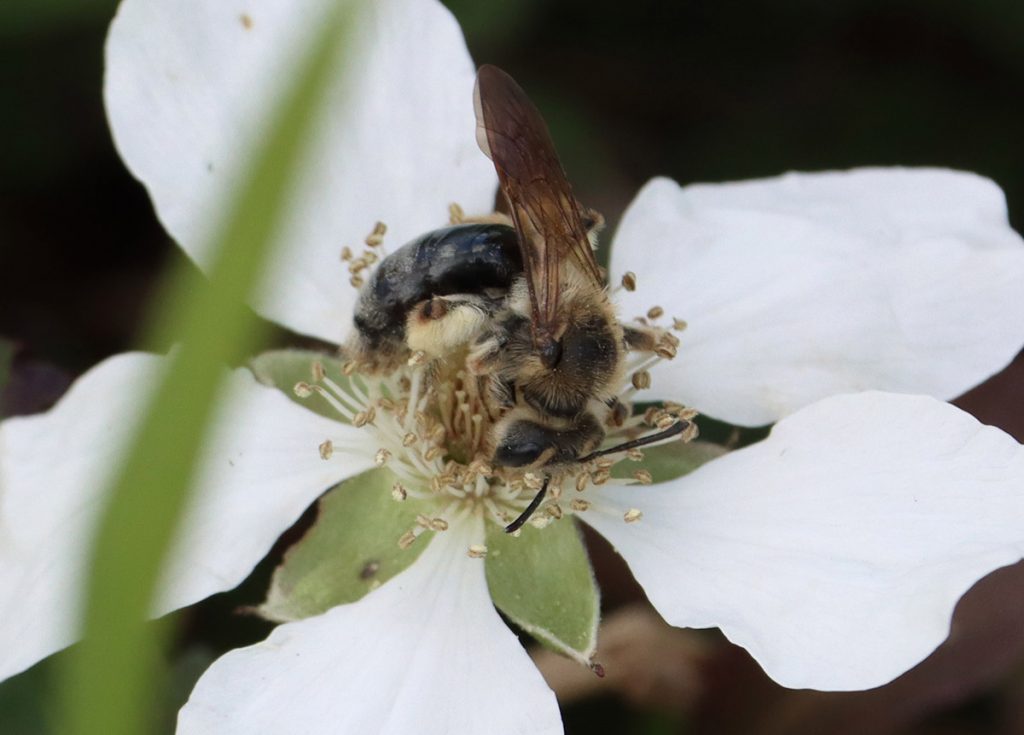Growing up, my mom had an off-white needlepoint pillow that rested on our leather couch with the phrase Let all your weeds be wildflowers stitched in purple. As a kid I was mesmerized by this pillow, spending hours staring at it—I couldn’t quite grasp what it meant. My dad had an expansive garden and, consequently, I was conditioned to love plants, knowing at a young age that flowers were magical. I can still picture long road trips on hot summer days, staring out the window and watching strips of wildflowers decorating interstate medians—bursts of oranges, yellows, purples, and reds that I didn’t yet know the names for. These wildflowers had replaced the more usual lawns that fill medians, rewilding areas that had been manufactured for utilitarian purposes. How could any flowers be considered weeds? I wondered. I’ll be honest, even as an adult, I have trouble grasping the concept of wildflowers as weeds, especially wildflowers that are native.
I have a little garden in midtown Tallahassee—a corner lot that was mostly turf and cat’s claw when I moved in three years ago. I knew I needed flowers in my yard, and so I immediately began ripping up sections of my lawn, Michael Pollan’s voice ringing in my ears—when an American rips out their lawn, they become—perforce—a gardener (you can listen to a whole episode about this concept on the podcast, Cultivating Place). The guy isn’t a big fan of lawns, in fact, he wrote a manifesto against lawns for the New York Times Magazine (Why Mow? The Case Against Lawns), even going so far as to say, “a lawn is nature under totalitarian rule” arguing that lawns are emblematic of our control over nature—our desire to create a pristine, monoculture that is the antithesis of how things grow in a more natural, balanced ecosystem.
Pollan’s answer to creating a more interesting ecosystem is to tear up his lawn. This was my solution to beautifying and diversifying my property as well, but this solution is somewhat more drastic, and there are ways, if you don’t want to spend an inordinate amount of time and money revamping your lawn, that you can rewild your yard on a smaller scale.

How to Maintain Your Tallahassee Lawn
In Tallahassee, our lawns can be somewhat sustainable and some of the problems that are commonly associated with lawns don’t apply, as much, to us. One of the greatest complaints against lawns is that they can be a great drain on resources. This is particularly true in places like southern California where water shortages are a huge concern; in dry climates, lawns can use an excessive amount of water.
St. Augustine, a turf variety with thick, greenish blades, and one of the most common types of turf grown in Tallahassee, is actually a native plant to the Gulf of Mexico, so it is very suited to our climate. You might have to get out a hose or a sprinkler during some of our super dry spells, but as our wet season corresponds with our hot season, our lawns can get most of the moisture they need naturally.
While our lawns might dry out in the winter, it is perfectly suitable for them to go dormant during this time, and they will likely bounce back. There are other ways that lawns can be bad for the environment, and many of them do apply to Tallahassee, for instance, to keep lawns looking pristine and weed-free, often fertilizers and weed-killers are necessary, and lawns create large monocultures that are devoid of resources for local animals. (Fertilizer run-off is one of the leading causes of manatee deaths, and so is a big concern for Floridians!)
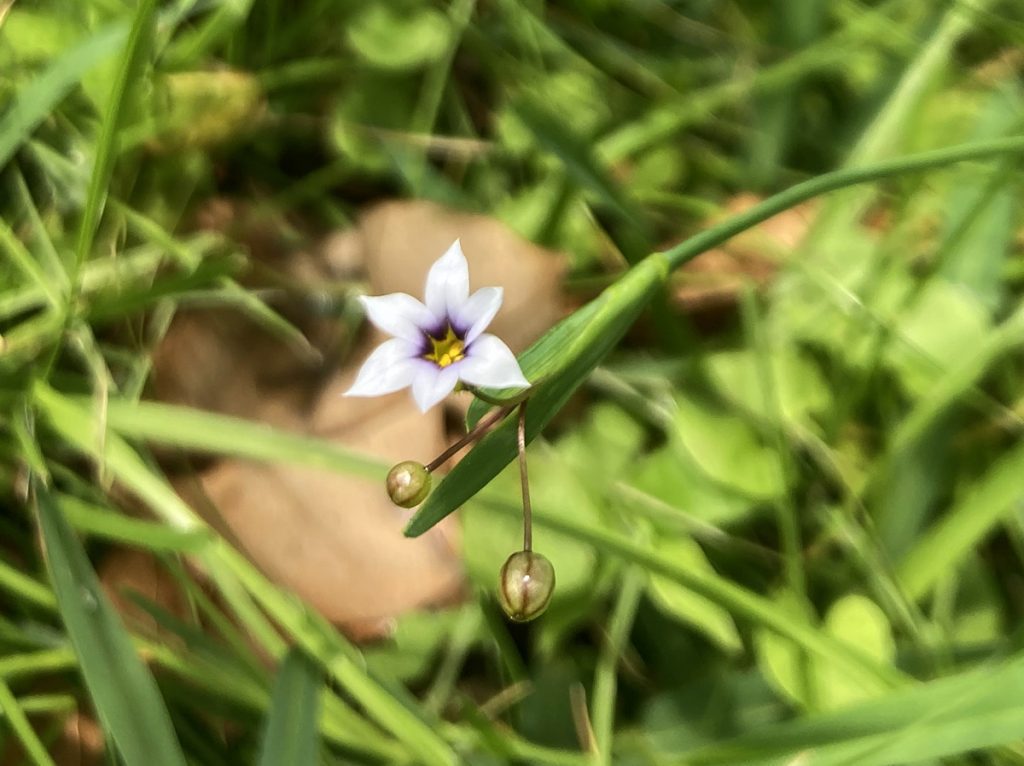

When you disturb soil, invasive species may creep in
But before you go tearing up your lawn, know that tearing up lawns in Tallahassee can be tricky. As we live in a subtropical climate, it can be very easy for things to grow here. The temperature is warm, and in summers, plants are well-watered by our afternoon thunderstorms.
This can be great for gardening, but it also means that our list of invasive species and noxious weeds (a weed which is considered to be harmful to the environment or animals) is extensive—lots of stuff wants to grow in our fertile landscape! Some of the most common noxious weeds I see in my neighborhood are Nandina, taro, tropical spiderwort, and cat’s claw, but the University of South Florida has created an extensive searchable list (with pictures!) you can peruse to investigate how many of these invasive plants you have in your own yard.
Nandina, commonly used as an ornamental and sold at a shocking number of local nurseries, is a plant that I am particularly passionate about removing as its berries contain cyanide, and can poison birds that think the berries are edible (Audubon). (Seriously, if you have Nandina in your garden, remove it, or at the very least, clip off the berries and throw them away in the trash—not yard waste or compost—so birds don’t eat them and the plant doesn’t spread from your yard.)
When we allow or plant noxious weeds in our garden, we increase the risk that they will escape our yards and continue to spread into our local parks, forests, and waterways. In our local ecosystems, they can out-compete and displace native plants, which in turn can harm native animals who have adapted to live off native plants.

Removing Tallahassee lawns can invite “weeds” (which might not be a bad thing)
When we remove lawns, we create bare spaces and often “weeds” spring up in these spots, some of them noxious and detrimental to our local ecosystems.
While we tend to bemoan weeds, I want to make a quick case for weeds: weeds, which can often grow in places other plants can’t, can help serve an important ecological purpose by re-greenifying landscapes that have been disturbed by human intervention or by natural disasters, adding nutrients back into the soil, or even growing places where there is very little soil, eventually making these spaces more habitable for other types of plants.
In our own gardens, we need to make judgement calls about what are appropriate weeds and what are not, remembering that “weed” is a value term, which is why I originally put it in quotations marks—it just means plants we don’t want in our gardens.
My mom’s needlepoint pillow rightly proclaims that there are tons of wildflowers that many people consider weeds, while these same flowers are plants that other people buy from local nurseries. For me, native “weeds” like violets and lyreleaf sage are welcome, but noxious Florida weeds like camphor seedlings are not.
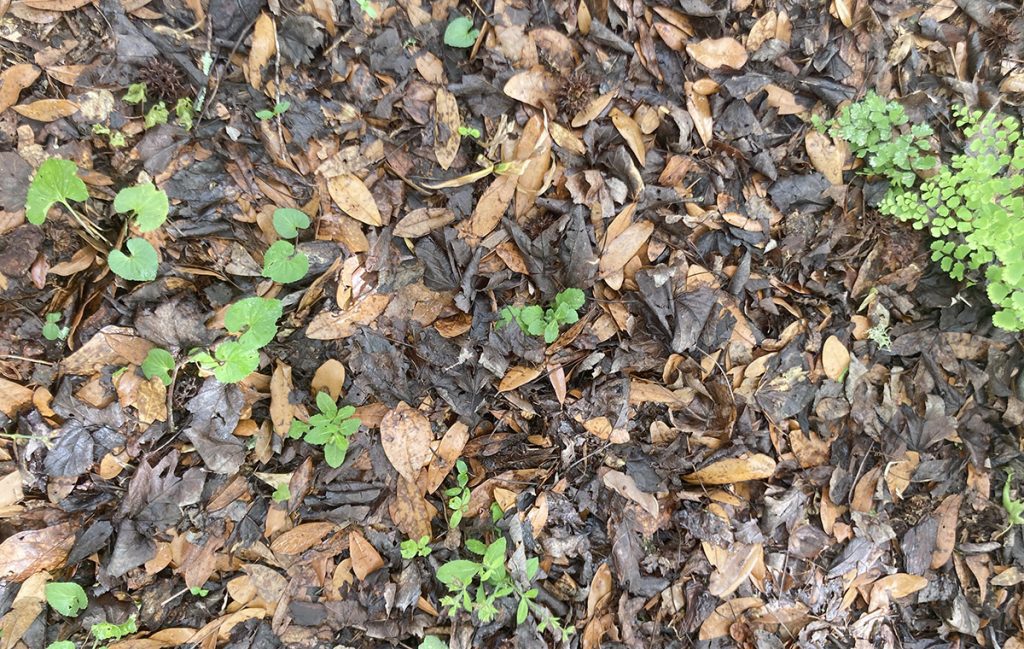
Rewilding Your Lawn and Feeling Comfortable with Weeds
If you want to push against the monoculture of lawns and invite a little more natural gardening in your yard a good place to start is to allow your yard to grow a little weedy. This can be a more manageable alternative to ripping up your lawn and turning it into a wildflower patch, as you still are able to mow down your lawn and keep weeds at bay once the growing/wet seasons starts in North Florida.
Leon County Extension recently pioneered a no-mow March event, where they invited people to stop mowing their yards for the month of March to give native wildflowers a chance to blossom. Some of the common wildflowers they said to look out for included: violets (Viola spp.), dewberry (Rubus trivialis), lyreleaf sage (Salvia lyrata), mock bishopsweed (Ptilimnium capillaceum), smallflower fumewort (Cordyalis micrantha subsp. australis), and earthsmoke (Fumaria officianalis).
If you take this approach, try going to extra mile and avoiding fertilizers and weed killers as well. When you mow your lawn, let the grass clippings themselves return nutrients back to the grass, rather than artificial additives.
Participating in a no-mow event, creates food for native species. Insects and hummingbirds feed on native flowers, and native birds feed on native insects. March is a good time to let your Tallahassee yard become a little wild as our grass is just waking up from dormancy and not growing at such a rate that it will look “out of control,” nor will it open up your yard to become consumed by invasive plants.
March has now passed, but I still spot native flowers blooming throughout my lawn—mostly lyreleaf sage, Florida betony, and violets. As lawns are still growing at a slow rate, letting them be a little more natural throughout April or even into May is a possibility. You do want to keep an eye out and make a judgment call as to when it’s important to start mowing. Left un-mowed too long and you could invite noxious weeds to take up residence in your lawn that are hard to get rid of.
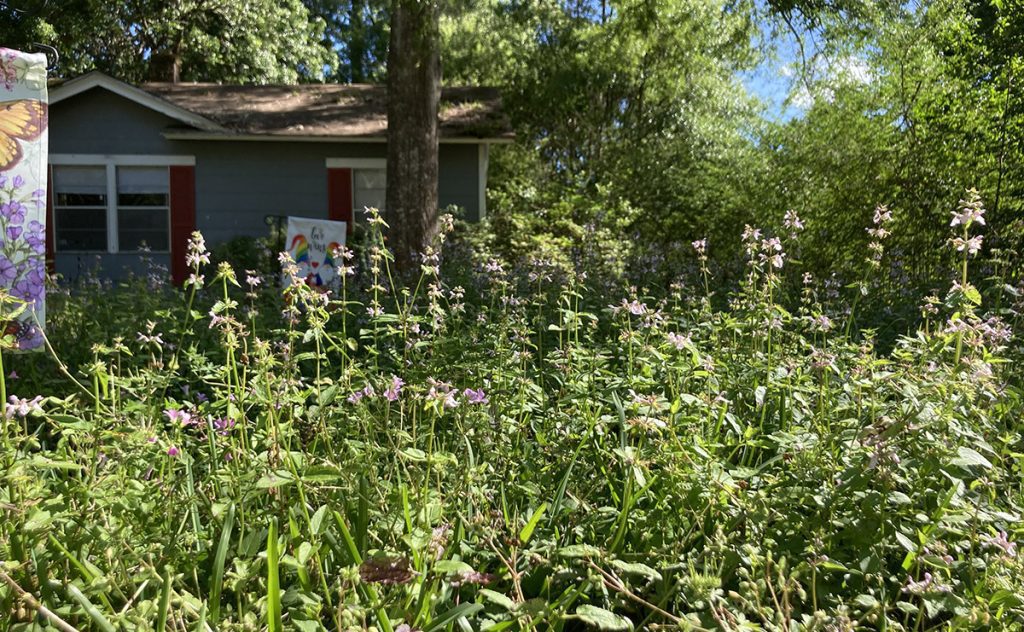
Advice for Tearing up Tallahassee Yards and Rewilding Your Space
If you do decide that you want to tear up your lawn, try doing so in small sections, rather than going for the whole thing at once. As disturbing land opens up the space for weeds to grow, disturbing small sections allows you to manage a piece of property until it becomes more self-sufficient.
I’ve seen firsthand how quickly a disturbed patch can become overgrown with invasive weeds. During a summer storm, a large sweetgum branch fell on my yard, killing the grass underneath it. In the bare patch, tropical spiderwort (Tradescantia fluminensis), a noxious Florida weed, sprang up, quickly spreading from this disturbed area and outcompeting with my St. Augustine turf.
Tearing up small sections of your lawn allows you to weed out things you don’t want while you wait for seedlings or transplants to comfortably occupy a space. It also allows you to understand the level of care it takes to maintain a garden bed or wildflower patch, rather than a lawn.
You might find it is less work and want to expand your wildflower patches, or alternatively, you might find it’s hard to keep the weeds down and that you want the lawn to reclaim the patches you created (which is very possible if you do a small patch!).
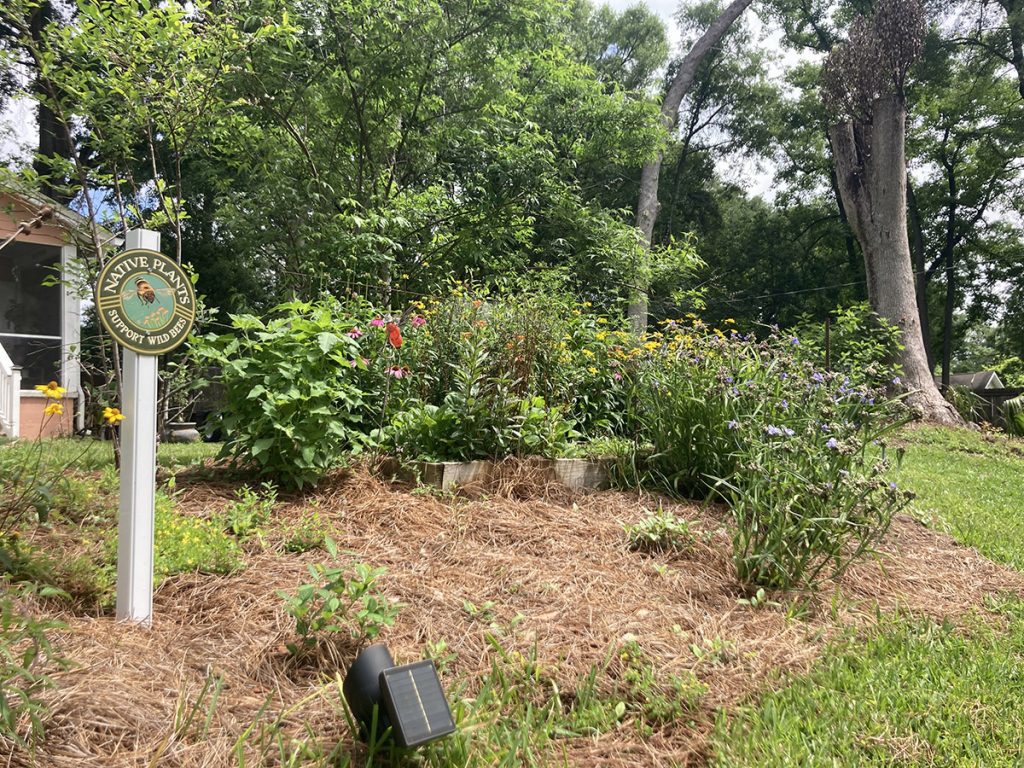
I ripped out sections of my lawn and put in garden beds with a mix of ornamental and native plants and I have found, overall, that the maintenance isn’t too cumbersome.
I mulch my beds to keep weeds at bay, and I like to meander around the garden and pull up camphor seedings that nestle amongst my roses and ironweed. I find this level of weeding relaxing—a way for me to get up and close with my plants—and I don’t find it much more work that maintaining a lawn, which let’s face it, with the mowing and fertilizing and weeding—it’s a lot of work!
By pairing native plants with Florida-friendly ornamental plants (essentially, plants that are not noxious weeds), my garden beds have structure and look more ornamental, rather than completely wild—an aesthetic that matches my tastes.
Other Ways to Help Out Native Pollinators
If you live in a community with a Homeowners Association (HOA) that forbid you from having a more natural looking lawn, or you simply don’t like the look, you can also think about removing some of the beneficial native pollinators from your lawn and transplanting them to garden beds. I like to do this, treating my lawn like a nursery where little volunteer plants (plants that I did not purposely plant) nestle in between blades of St. Augustine.
Some of the most common volunteer plants I find in my garden are lyreleaf sage and violets. These are plants that people purposely plant in their yards—Native Nurseries sells both of them—and they are beneficial to local pollinators. Violets are host plants to variegated fritillary butterflies and so having them in your yard increases your chances of a pretty orange and brown butterfly flitting around your yard.
I’ve found that lyreleaf sage makes an excellent groundcover in flower beds—most of the year, it has a very flat growth pattern and then in the spring it shoots up beautiful ice blue flowers. To identify other plants that might be growing in your yard, check out Rob Diaz de Villegas’s post in the WFSU ecology blogs from a couple of years ago.
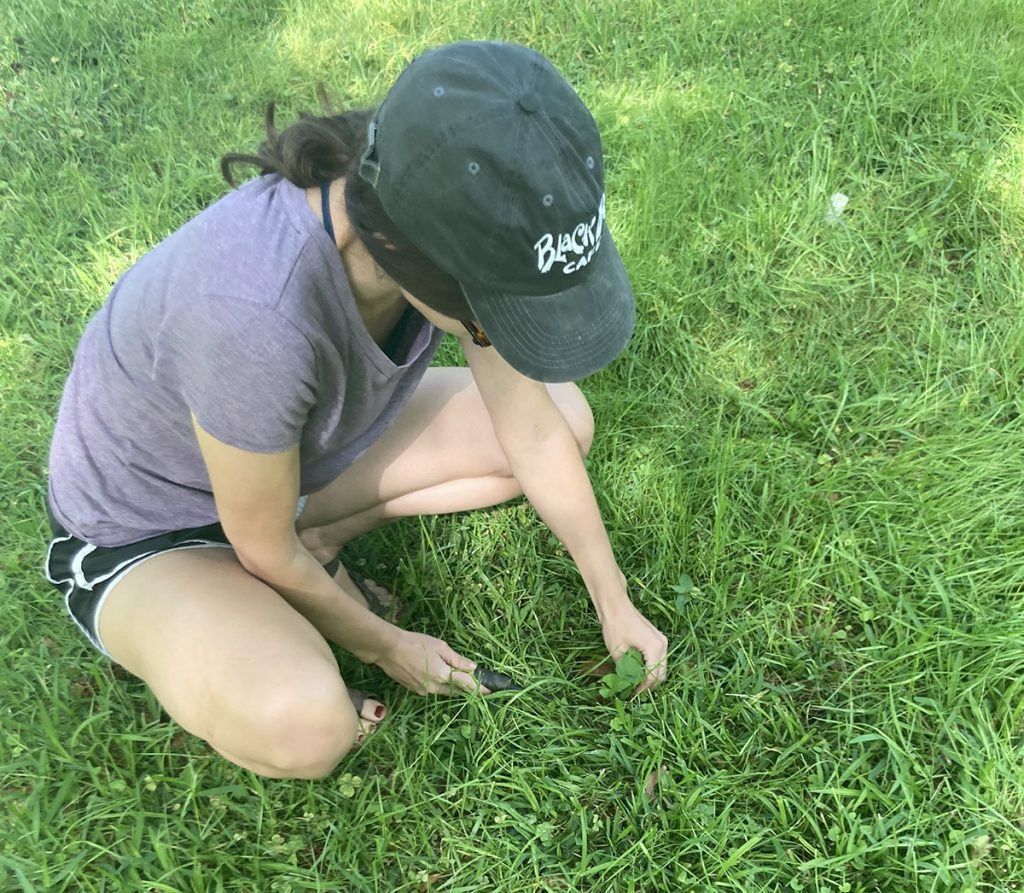

As the native plant movement continues to have its moment, there are many ways you can participate in its growth, however much you are comfortable with—you can create a designated space for native plants, transplant your volunteer natives, participate in no mow events, or even do something more radical, like this Maryland couple who challenged their HOA’s ban on wilder spaces. Just remember to consider your time, your resources, your ability, and our local subtropical climate!
Learn how using pine straw as mulch and using fallen branches to line garden beds helps nesting bees in this 2021 Ecology Blog post.
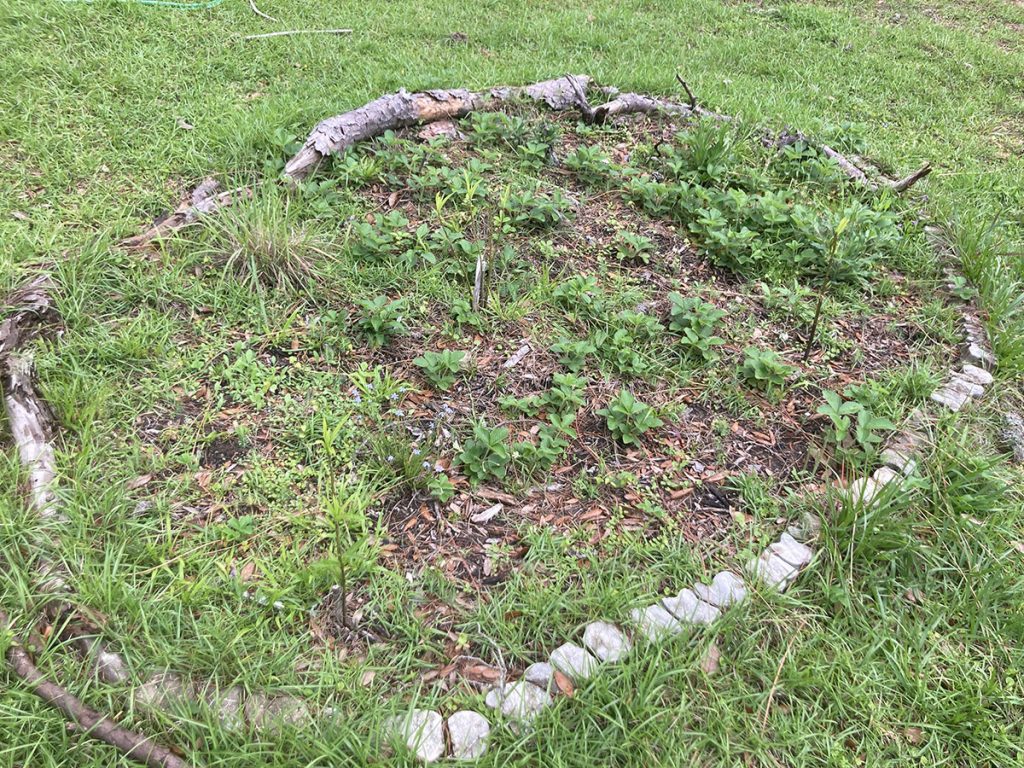
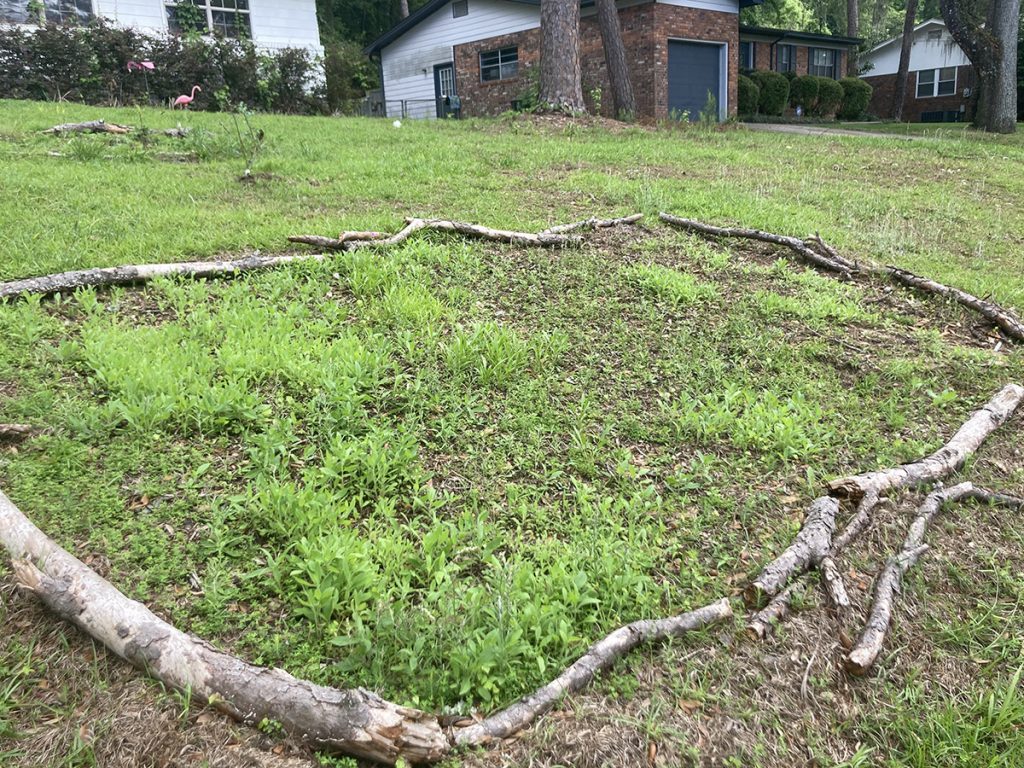
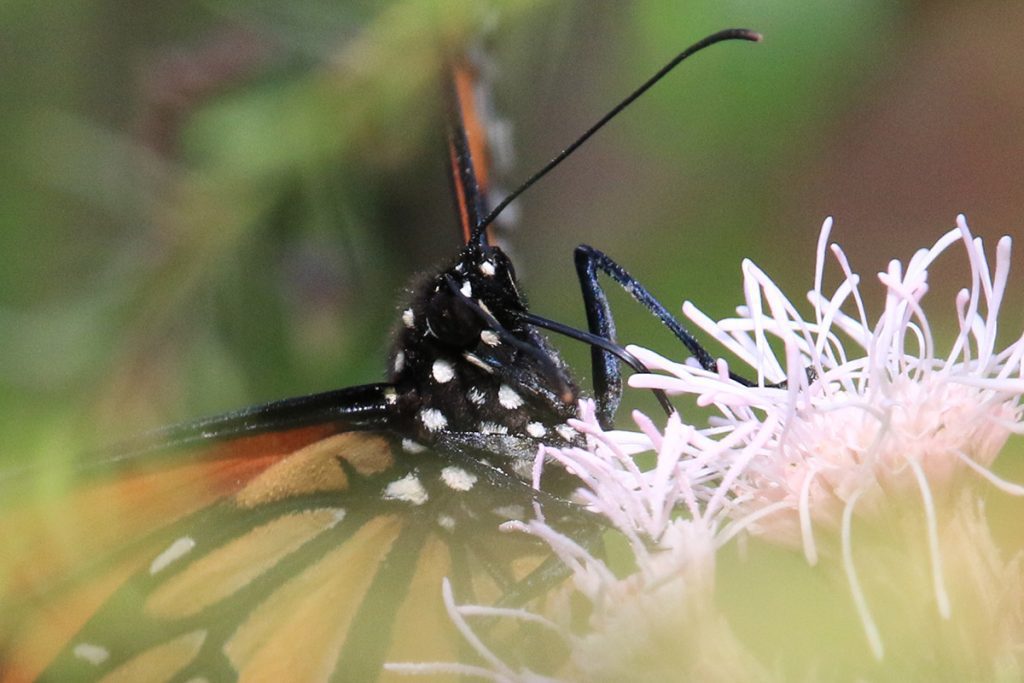
Dig Deeper into Backyard Ecology
What can we do to invite butterflies, birds, and other wildlife into our yards? And what about the flora and fauna that makes its way into our yards; the weeds, insects, and other critters that create the home ecosystem? WFSU Ecology Blog takes a closer look.

